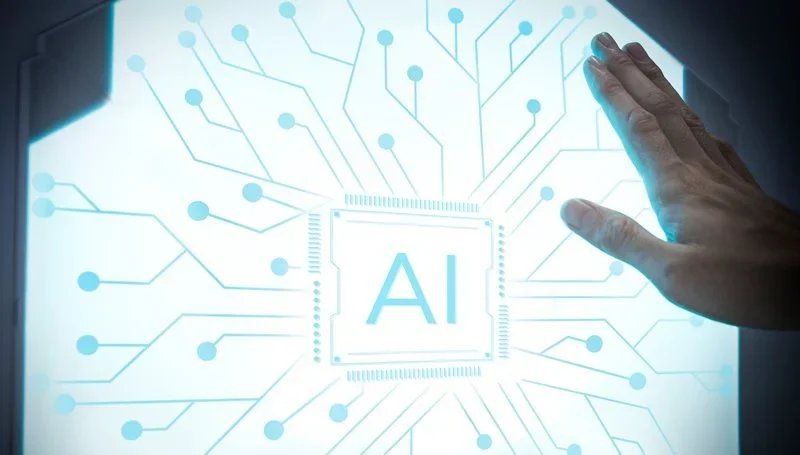Envisioning AI Integration: The Power of Executive Imagination
As you embark on the journey to integrate artificial intelligence into your company's legacy software systems, it may be helpful to think of this endeavor not just as a technical project, but as a story yet to be written—a series of episodes that involve challenges to be overcome, characters to be developed, and plot twists to be navigated. To bring the strategies for this complex task to life, let's explore a collection of illustrative anecdotes. These stories are fictional, yet grounded in the real dilemmas and opportunities that professionals often encounter. As you read through these narratives, consider them as inspiration for your own story of AI transformation. Could Jane's audit strategy be the opening chapter for your organization's journey? Would Tom's iterative approach work as your story’s rising action? It's time to find your narrative.
The Journey of Assessment and Planning: An Anecdote from Jane's Department
Imagine Jane, a middle manager at a large manufacturing company, who believes that AI can optimize the factory's supply chain. She organizes a team and initiates a technical and strategic audit of their legacy systems. They find that their outdated inventory software doesn't even support APIs. As daunting as it sounds, Jane realizes the lack of modern infrastructure is actually an opportunity in disguise—it helps her persuade the leadership to consider a more significant investment in AI and even some much-needed system updates.
The Art of Incremental Implementation: The Tale of Tom's Pilot Project
Meet Tom, an IT leader at a healthcare provider, tasked with implementing AI to improve patient scheduling. Rather than overhauling the entire system, he decides to focus on a single department first. After two months, the department reports a 20% improvement in appointment efficiency. Buoyed by this success, Tom is granted permission to extend the program hospital-wide, but he chooses instead to optimize further based on the initial feedback. The final rollout proves much smoother and more effective due to these iterative improvements.
Navigating the Data Landscape: Sarah's Data Odyssey
Sarah, a data scientist at a retail giant, faces the gargantuan task of cleaning and organizing years of sales data from various legacy systems. She initially feels overwhelmed but decides to tackle the project one dataset at a time. As Sarah works through the data, she recognizes patterns and discrepancies that a machine learning model can address. By the time she's ready to integrate AI, the cleaned-up data proves to be a goldmine for actionable insights.
The Architectural Puzzle: Alex's Middleware Solution
Alex, a software engineer at a financial firm, is stuck with legacy systems that are rigid and incompatible with modern AI technologies. He discovers that a middleware solution can act as a "translator" between the old and the new. Within weeks, Alex successfully links an AI-driven fraud detection model to the firm’s existing transactional systems, turning what could have been a logistical nightmare into a seamless transition.
The Human Element: Emily's Change Management Success
Emily is an HR manager at a tech company looking to implement AI in their customer service department. The agents are worried that AI might replace them. Emily creates a series of workshops that show how AI will assist them in handling queries more efficiently, not replace them. The workshops even include a feedback session where agents can voice their concerns and suggestions, making them feel part of the journey rather than victims of it.
The Ongoing Saga of Monitoring and Maintenance: Robert's Dashboard
Robert, a project manager at a utilities company, knows that the integration of AI into their legacy monitoring systems is just the beginning. He sets up a dashboard that tracks key performance indicators in real-time. Within a month, Robert notices that one of the AI models is not performing as expected. Because he caught this early, his team makes the necessary adjustments, averting a potential waste of resources and time.
Through these stories, you can see the contours of how your own AI integration journey might look, with its unique challenges and opportunities. Each of these tales can be a chapter in your organization's story of transformation, showing how to make artificial intelligence not just a collection of algorithms but a key actor in your company's unfolding narrative.
Back to the INSIGHTS catalog
About Jack Frost Design
We’re entering an era of astonishing change—where AI isn’t just a tool, it’s a shift in how work gets done. At Jack Frost Design, we help organizations ride that wave with confidence. With five decades of experience guiding clients through digital upheaval, we now focus on preparing Microsoft 365 environments for the Copilot era—where structure, clarity, and training turn potential into momentum.
We don’t tame the future. We help you ride it—with your hands on the reins.
👉 Discover how we make Copilot real-world ready: jackfrostdesign.com/why-safe-zones
👉 Take the 1-minute Strategy Fit Test: jackfrostdesign.com/strategy-fit-test
👉 Join an upcoming webinar: jackfrostdesign.com/webinars
Follow us for insight, clarity, and Copilot strategies that scale:
🔗 LinkedIn | 🐦 Twitter/X | 📺 YouTube
#AISafeZones #StrategicRelationalAI #EnterpriseAI #AIAdoption #CopilotReady #Microsoft365 #GovernanceMatters #JackFrostDesign #DigitalTransformation #LandingZones

